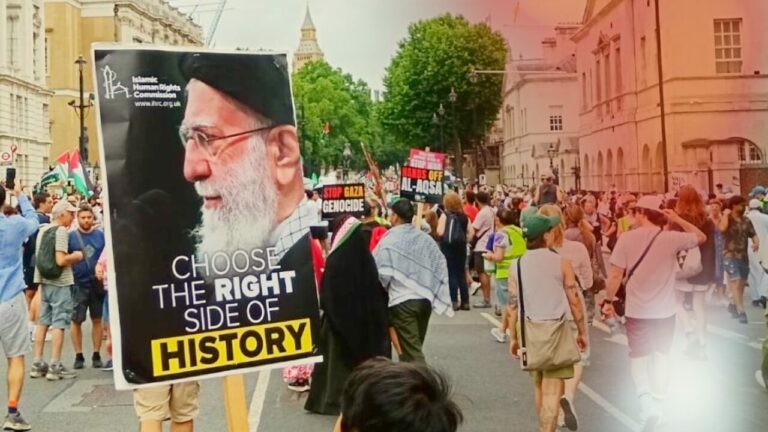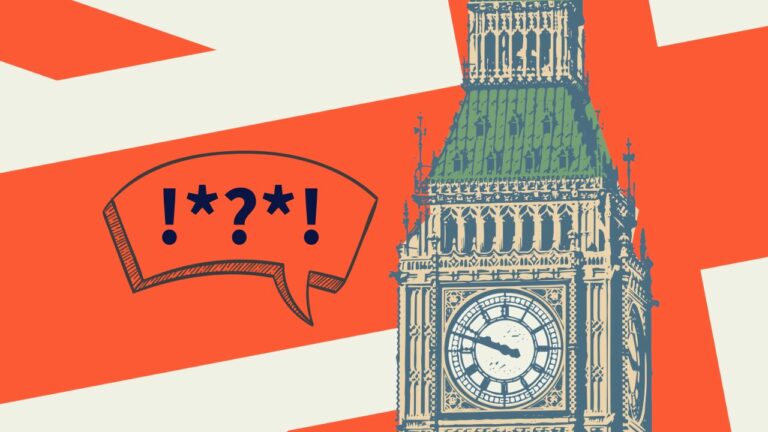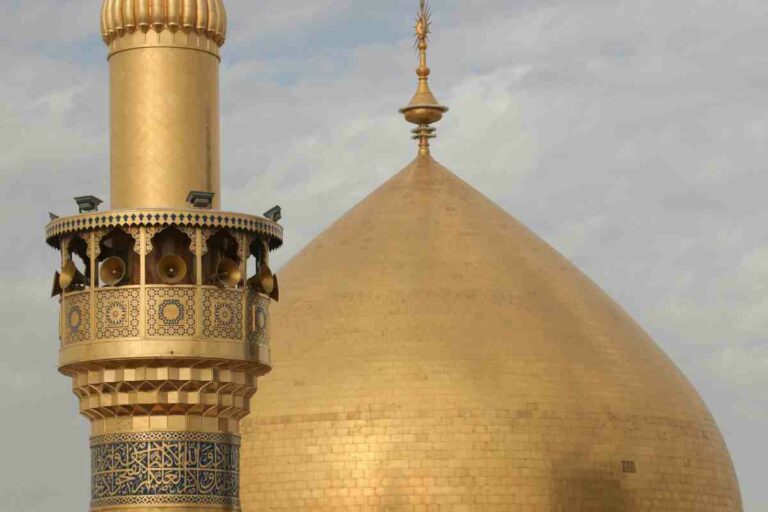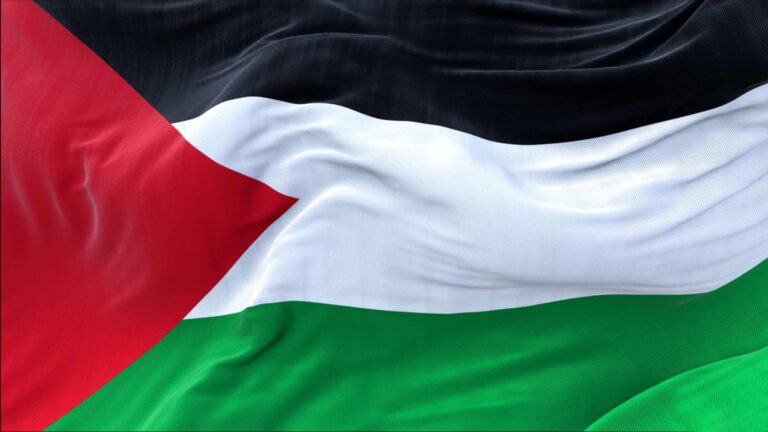Abstract: This article investigates the implementation of inclusive vision in Islamicjerusalem after the first Muslims conquest of the region. This will involve historical evidences in order to introduce the new conceptual framework of inclusiveness derived from the Quranic verse in which Allah says: “We have delivered him and Lut? to the land which We have blessed for all nations” (Qur’an, 21: 71). This article will also attempt to highlight how the non-Muslims were treated in Islamicjerusalem during the early period of Islam.
Introduction
Islamicjerusalem[i] is a region of great significance to Islam and Muslims. This is evident when one studies the two core sources in Islam, that is the Qur’ān and the Hadīth. At the same time there are similar proofs of an intimate relationship between the region and Islam in a historical context and in literature.
Notably, the region is considered as important to three monotheistic religions; Islam, Christianity and the Judaism. As for the Jews, Hudson[ii] states that: “to Jews and Zionists the city was both religious and a national symbol”. For Christian, the region was, among others, the birthplace of Jesus, and where the Church of Holy Sepulchre is situated. For Muslims, the region has much importance and religious significance since, among others, the region was the first Qiblah, as well as the land where many prophets had visited, lived, were born or died, including the visit by Prophet Muhammad during the miraculous Night Journey and Ascension.
Since the region is significant to three different major religions of the world, it thus leads to competition in religious claims as is apparent even until today. Hudson and Armstrong[iii]argue that there is a conflict in the region since it was put under British Mandate in 1917. Armstrong stresses that “its ownership was contested by the Jews, the Arabs, and the international community.”[iv] This clearly shows that there is competition in the claim of ownership over the region.
So, what was the difference when Islamicjerusalem was under Muslims rule? What was the condition of non-Muslims during the first Muslim conquest of the region? Considering these questions therefore, this article will attempt to explore the Muslims’ approach and how they dealt with non-Muslims in the light of the Quranic phrase li al-‘ālamīn (Qur’ān, 21: 71).
The first Muslim conquest of Islamicjerusalem
The significance of Islamicjerusalem to Islam and Muslims entered into a new realistic phase after the region was conquered by Muslims for the first time in Jumāda first or second 16 AH / 637 CE,[v] which Duri[vi] argues has started a new era of history of the Arab East. Hence, during the time of Muslim rule, the region flourished in its reputation for tolerance, religious co-existence and multiculturalism. There are evidences which show that Muslims did not prohibit others from practising their faith in Islamicjerusalem. The foremost evidence is the historical document of ‘al-‘Uhda al-‘Umariyyah’,[vii] also known as ‘Umar’s Assurance of Safety to the People of Aelia.[viii] This document of safety was granted by ‘Umar Ibn al-Khattāb, in order to maintain peace and systematic life in the region, as well as to generate a civil society. According to Abd al-Fattah El-Awaisi, ‘Umar’s Assurance “was the jewel of the first Muslim conquest of Aelia; and was the beacon for developing Islamicjerusalem’s unique and creative vision”.[ix]
The first Muslim conquest of the region is significant in that it then became closer to the Muslims faith and heart. Hence, Join-Lambert argues that: “After having been the capital of tribes for a thousand years it was a great time for Islam to attach it [Islamicjerusalem] most closely to its own faith.”[x] This is well developed in line with the Muslims understanding on the Quranic concept since Islamicjerusalem is so significant to Islam and Muslims.
A unique region
In the definition of Islamicjerusalem which was developed by Abd al-Fattah El-Awaisi, it is stated that Islamicjerusalem “is a unique region laden with a rich historical background, religious significances, cultural attachments, competing political and religious claims, international interests and various aspects that affect the rest of the world in both historical and contemporary contexts.”[xi]
From this definition, it can be noticed that Islamicjerusalem is a unique and distinctive region. The evidence from the historical aspect shows that the history of this region began some thousand years Before Christian Era (BCE). In fact, its history is as old as the history of humankind itself. According to Muslim scholars, the first prophet to have any connection with Islamicjerusalem was the first man created by Allah, which is Prophet Ādam. Many more prophets after him visited and lived in the region, including the visit of the last prophet on the Night Journey, thus adding to the region’s historical richness.
Since then and until today, the region has been governed by many different rulers such as of Byzantines, Persians, Muslims, Christians and the Jews.[xii] This indicates that many people of different backgrounds and cultures have a connection with the region. Hence, it is not surprising that Islamicjerusalem is laden with cross cultural attachments.
Another important aspect of cultural history of the region is the proof that people of different backgrounds, ethnicity and cultures were able to live together in harmony when the region was under Muslim rule.
Multicultural population and implementation of inclusive vision
Examining the demographical aspect, this researcher found that when Islamicjerusalem was under Muslim rule, it became a place where all people regardless of their background and religious status, had a right of access. This is one of the unique characteristics of Islamicjerusalem, it is the land open to all. Historically, when the Muslims ruled over the region, non-Muslims were allowed to reside in it.[xiii] Unlike Islamicjerusalem, the status of Makkah and Madīnah are both considered as Harām lands, whereby only Muslims are allowed, and non-Muslims are prohibited from entering them.[xiv]
So, from a historical context, when Islamicjerusalem came under Muslim rule, the region was an open place for all. Christians and Jews were allowed to reside in it, even though the Byzantine Emperor had expelled the Jews in 135 CE, and prohibited them to enter Islamicjerusalem.[xv] The Jews since then had been under exile for approximately 500 years before the first Muslim conquest of the region in 637 CE / 16 AH.[xvi] After the first Muslim conquest, the rule changed and they were allowed by Muslims to enter the region yet again.
Thus, from the document of ‘Umar’s Assurance, it can be seen that Islamicjerusalem was a symbol of respect of diversity in everyday life. Accordingly, Islam introduced a new concept of life, which was not based on religious fanaticism but on values such as respect, tolerance, and practicability of social contract with others. Accordingly, it can be argued that through ‘Umar’s Assurance, the multicultural society was reinstated in Islamicjerusalem. Subsequently, Abd al-Fattah El-Awaisi argues that the foundations of a mutual relationship among the multi-religious and multi-racial inhabitants of Islamicjerusalem were laid down in the form of what is known as “‘Umar’s Assurance”.[xvii]
Accordingly, it becomes clear that the vision of Islamicjerusalem is not to exclude others but to include all people and deal with them with justice. This is well in line with the core teaching of Islam, which introduces the concept of justice to be practiced; then peace will prevail within a civil society. Allah says in the Qur’ān: “… Be just, it is very close to piety…” (Qur’ān, 5: 8). This means that justice is essential in all aspects of human life for the betterment of society, civilised and developed nations.
Thus, it is no wonder when Armstrong argues that, before the time of the Crusades, the city of Islamicjerusalem became a place in which non-Muslims could live peacefully and it “was known as a city of Dhimmis, because Jews and Christians were so populous and successful there”.[xviii] In fact, it is not only just before the time of the Crusaders that non-Muslims were living peacefully; this began as early as the first Muslim conquest of the region. In the early Islamic period, non-Muslims in Islamicjerusalem were able to live in peace after ‘Umar had assured and granted them safety. In this regard, Wilkinson[xix] argues that: “They [Muslims] permitted Christian and Jews to remain in their own religions on condition that they paid the poll-tax [jizyah].”[xx]
It can be argued that this is the guise of ‘Umar’s Assurance, which is to granting non-Muslims their rights. Hence, the importance of the document has been stressed by Abu Munshar, who argues that: “‘Umar’s Assurance stands as an important reference text and contains basic principles for the relations between Muslims and non-Muslims and the way Christians should be treated, which are applicable in all times and places.”[xxi]
In contrast to the above argument, Gil[xxii] claims that the information that non-Muslims received fair treatment is found only in the Muslim traditions. He claims that it is impossible to learn the real truth in this case. He continues that one can assume the local population suffered immensely during the course of the war and it is likely that many villages were destroyed and uprooted in the frontier regions, and that many of these local populations were left bitter.
With regard to this accusation, Yatiban[xxiii] argues that he does not find even a single account from Muslim historians, chroniclers or scholars, which records that the Muslim conquest was followed by a destruction of synagogues or churches and brutal slaughtering of the inhabitants. He goes on to affirm that, instead of that alleged malicious treatment, Muslim conquerors had shown very good attitudes towards the local population.
This researcher does not agree with Gil and thus argues that Gil’s claim is merely based on assumption, perhaps to provoke more research with solid evidences to counter his assumption-based arguments. This researcher also found sufficient evidences to disagree with Gil, since Duri[xxiv] argues that pilgrimage continued to Islamicjerusalem and life was lively. In addition, Bishop Arculf, who was in Islamicjerusalem states that people from various countries came to Islamicjerusalem and an annual fair was held there on 12th September with several trading activities.[xxv] Gil’s argument becomes more irrelevant when Wilkinson presents the account of Adomnan which supports this situation. Adomnan, who met Arculf during his time, quoted what Arculf said as follows: “Each year on the twelfth of September a huge crowd always come to [Islamic] Jerusalem. They come from almost every country to hold a fair, and buy, sell, and exchange.”[xxvi] Correspondingly, al-Tel quotes that Bishop Arculf, who visited Islamicjerusalem as a pilgrim in 50 AH / 670 CE during the caliphate of Mu‘āwiyyah Ibn Abī Sufyān who ruled between 41 – 60 AH / 661 – 680 CE, recounts that he found two groups of Jews in Islamicjerusalem: the first had converted to Christianity and the second remained Jewish.[xxvii] Gil’s argument, therefore, cannot be accepted, because of the firm evidence of both Adomnan and Arculf.
Furthermore, Yatiban argues that Muslim sovereignty over Islamicjerusalem has affirmed the continuation of pilgrimage to that holy place.[xxviii] As mentioned above, Bishop Arculf stated that the pilgrims had continued to come to Islamicjerusalem especially from the western world; this has also been noted by al-Tel.[xxix] This is supported by Wilkinson who argues that: “in contrast with the Persian invasion, the archeologists have discovered that the Muslim conquest of [Islamic] Jerusalem caused little material damage.”[xxx] This means that the religious significances of others were not destroyed during the first Muslim conquest of the region.
This in fact has been addressed by other scholars while researching the topic. In this regard, Armstrong argues that ‘Umar had expressed the monotheistic ideal of compassion more than any previous conqueror of Islamicjerusalem.[xxxi] She affirms that ‘Umar presided over the most peaceful and bloodless conquest that Islamicjerusalem had yet seen throughout its long and often tragic history. She adds: “Once the Christians had surrendered, there was no killing, no destruction of property, no burning of rival religious symbols, no expulsions and expropriations, and no attempt to force the inhabitants to embrace Islam”.[xxxii] Hence, if respect for the previous occupants of Islamicjerusalem is a sign of the integrity of a monotheistic power, Armstrong argues that Islam began its long possession of Islamicjerusalem very well indeed.[xxxiii]
It becomes clear that Muslims did not prohibit non-Muslims from performing their religious rituals. Furthermore, Muslims did not change the demographical aspect immediately. Upon this fact, Armstrong argues that: “Muslims made no attempt to build mosques in the Christian parts of [Islamic] Jerusalem and showed no desire to create facts on the ground there …. But until the Crusades, [Islamic] Jerusalem remained a predominantly Christian city and Muslims remained in the minority.”[xxxiv]
This means that Muslims did not interfere with the religious right of non-Muslims. At the same time, they were granted safety of their churches, synagogues and other religious centres as stated in ‘Umar’s Assurance. Al-Tel states that the Muslims’ policy on non-interference in the internal religious matters of others is also demonstrated by the continuation of Christians’ pilgrimage to Bayt al-Maqdis.[xxxv] Under Muslim rule, Christians continued their pilgrimage to Islamicjerusalem. Wilkinson reflects on this issue and said that the Christians’ pilgrimage “was not interrupted.”[xxxvi] This is in addition to the continuation of building and restoring churches in the area.[xxxvii] The Christians’ pilgrimage continued and became more active during the time of the Umayyads.[xxxviii] Tibawi argues that the flow of Christian pilgrims since the days of St Helena was not interrupted when Aelia fell under Muslim rule.[xxxix] This has also been agreed by ‘Athāminah in Filastīn fi Khamsāt, as mentioned by Abu Munshar.[xl] Eventually, “the liberation of [Islamic] Jerusalem by the Muslims did not stop the Christian pilgrims from visiting the Holy places in [Islamic] Jerusalem. They encouraged them to come and visit.”[xli] This means that Muslims did not attempt to stop the rights of non-Muslims since the very early beginning.
The Muslims treatment of non-Muslims in Islamicjerusalem shows that they had introduced a unique inclusive vision in the region. This inclusive vision had been applied, and indeed, Islamicjerusalem “had experienced inclusiveness during the Muslim rule”.[xlii] For the first time in world history, Islamicjerusalem was an open place for all people, regardless of their ethnicity or religion. Hence Armstrong, for example, argues that “Muslims did not attempt to exclude others” from the holiness of Islamicjerusalem.[xliii]
Furthermore, Abd al-Fattah El-Awaisi states that “what prevented Muslims to do all these is their vision of Islamicjerusalem”.[xliv] Indeed, Muslims have made Islamicjerusalem an inclusive region, open to all traditions, backgrounds and cultures to live together in peace. This is an obvious example of the vision of Islamicjerusalem, one that is inclusive, based on respect and trust, and accommodating to a multicultural society. Hence, it goes without saying that this inclusive vision is the main vision of Islamicjerusalem. Consequently, Armstrong profoundly argues that ‘Umar was faithful to the Islamicjerusalem’s inclusive vision, therefore “unlike the Jews and Christians, Muslims did not attempt to exclude others” from Islamicjerusalem.[xlv] She also affirms that instead of excluding these religions in Islamicjerusalem, “Muslims were being taught to venerate them”.[xlvi]
In line with Armstrong’s argument, Abd al-Fattah El-Awaisi argues that, “indeed, the unique aspect of Islamicjerusalem is highlighted through its vision, which presents a model for peaceful co-existence, and a way for people from different religious and cultural backgrounds to live together in an environment of multiculturalism and religious and cultural engagement, diversity and tolerance.”[xlvii] Therefore, it can be argued that, if there is no vision or a vision of exclusivity in Islamicjerusalem, it will naturally lead to internal and external conflict, which then will lead to instability and barriers to the steady progress and prosperity of the region.
In short, it is clear that the mission of Islamicjerusalem is to create a multi-cultural religious society, the best example of living with and respecting other people’s differences. Thus, it supports the mission of Islamicjerusalem of having a unique inclusive vision, rather than an exclusive one which excludes others.
‘li al-‘ālamin’: the foundation of inclusiveness
It is interesting to note that this unique inclusive vision of Islamicjerusalem is an outstanding concept taken from the Quranic inspiration based on the phrase li al-‘ālamīn – for all nations (Qur’ān, 21: 71). This particular verse mentions that Allah has delivered Prophet Ibrahim and Prophet Lūt to the land which He has blessed for all nations. Hence, this Quranic phrase has given huge impact to consolidate a new understanding on the concept of Islamicjerusalem. The Muslim understanding of this phrase is to include others in Islamicjerusalem. The phrase also means that Islamicjerusalem is for all nations, not only for Muslims. So, the verse firmly denotes that Islamicjerusalem is an open region and inclusive, not exclusive.
Although the phrase has been mentioned ever since in the Qur’ān, there has not been a concerted effort by Muslim scholars to interpret and accommodate the verse within the concept of inclusiveness. Hence, based on this, Abd al-Fattah El-Awaisi has made it clear in his argument and thus affirms that the inclusive vision is among the most important aspects of Islamicjerusalem. He states that “… one could argue that sovereignty was necessary. However, the Muslims’ vision of inclusion that is important, not having sovereignty over the area although that is important too.”[xlviii] Therefore, with the concept of li al-‘ālamīn, Muslims did not exclude others in Islamicjerusalem. Following this concept, Grabar states that “it is also so because Islam, which dominated the city during most of Middle Ages, acknowledge and formalized the rights and beliefs of those who remained in the fold of older tradition.”[xlix]
In the same notion, Muhsin Kilby has mentioned that “there is no question that Islamicjerusalem is holy to the three great faiths, Judaism, Christianity, and Islam, branching from Ibrahim (AS), but historically it is clear that it has only been under Islam that these three faiths have flourished and lived fruitfully side by side.”[l] He furthers comments that “Islamicjerusalem is a template in the Holy Land for differing faiths to live as brotherly neighbours.”[li]
In fact, the innovative understanding of Islamicjerusalem has contributed to this new impetus for li al-‘ālamīn aspect of the region. Indeed, it gives a positive significant impact on the new dimension of Islamicjerusalem to include others in the region.
Conclusion
The above discussion demonstrates that under Muslim rule, Islamicjerusalem was an open and peaceful place for all. It is of great importance to know that Islamicjerusalem under Muslim rule was an inclusive region, and thus, Muslims did not intend to oppress others as long as they kept within the aspirations of the ruler as to the promoting of a civil society, living in peace, toleration within multicultural society and respecting one another.
Activities were carried out as usual among the people over the region. Additionally, from further examination of the vision of Muslims concerning Islamicjerusalem, it is clear that under Muslim rule, the Christians and the Jews lived in peace and harmony. Unlike Crusaders and the current Israelis ruling over the region, it was under Muslims that Islamicjerusalem flourished with activities within multicultural society. This study clearly shows this to be a unique distinctive characteristic of Islam, i.e. that non-Muslims are treated equally.
Nowadays, the region is in a state of instability for many reasons, most noticeably is that there is no implementation of justice and the Jews tend to apply an exclusive vision rather than inclusive. As a result, the Israeli state confiscates the land and demolishes houses for inhabitants, especially the lands and houses of Arabs and Muslims. This means that they tend to Zionise the region, and to make it exclusive to specific people only.
In contrast, Muslims were shown to practically implement an inclusive vision during their rule. This is among the most important elements to make sure that peace and stability can be re-established.






